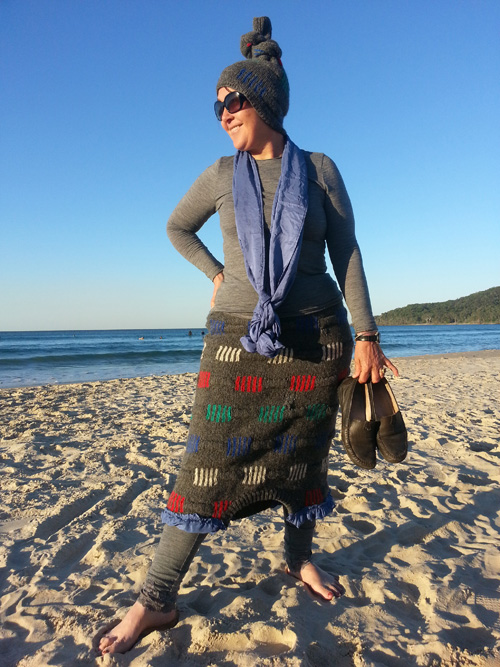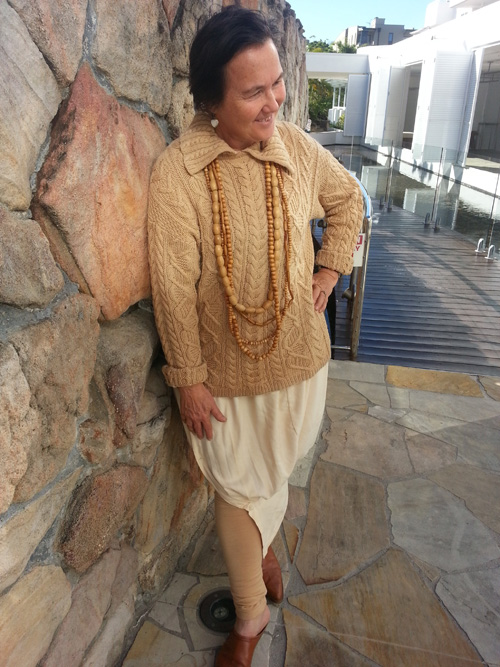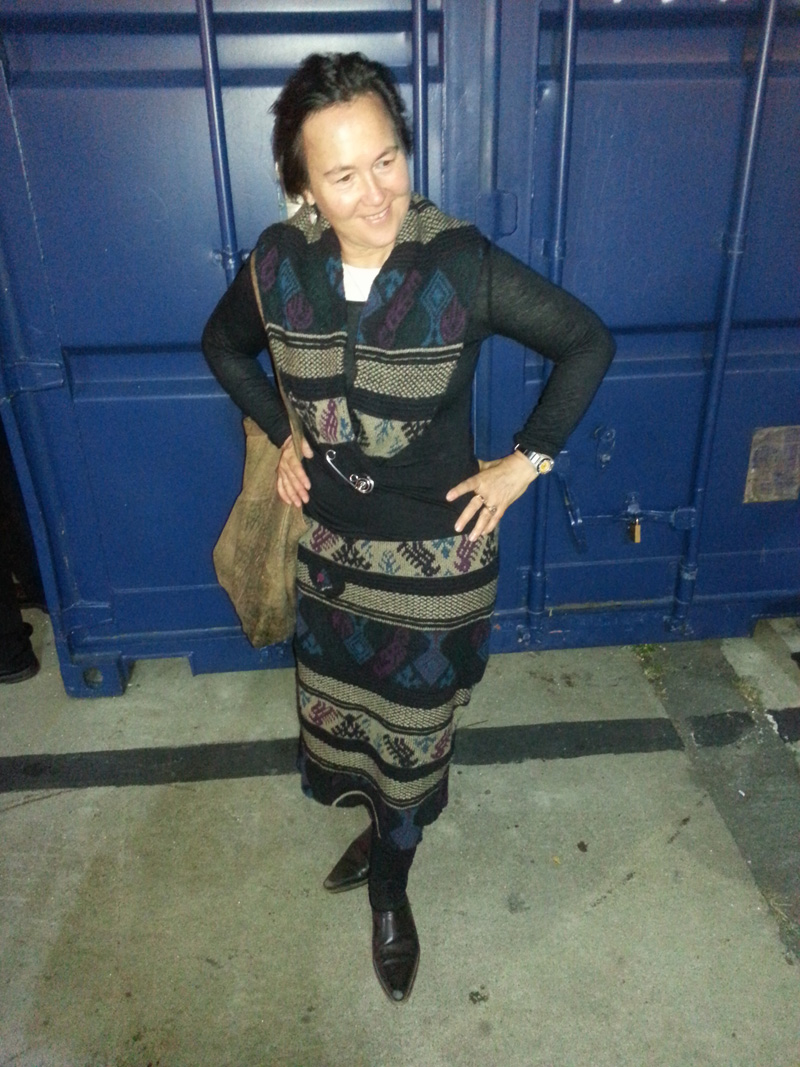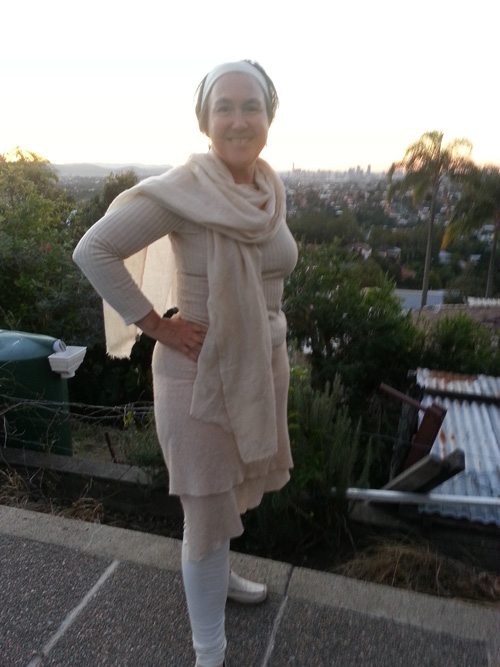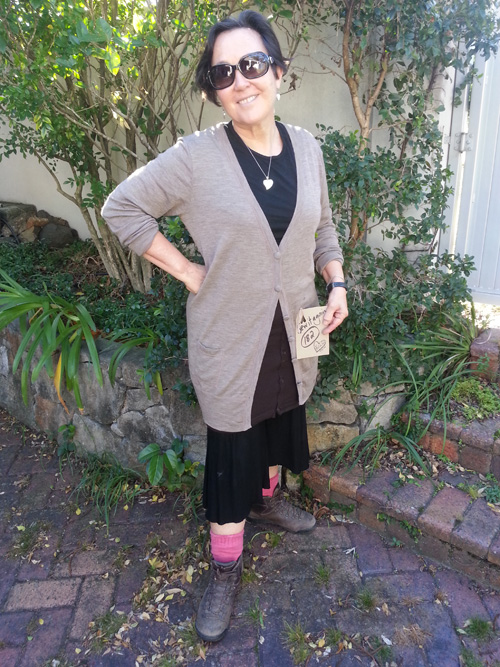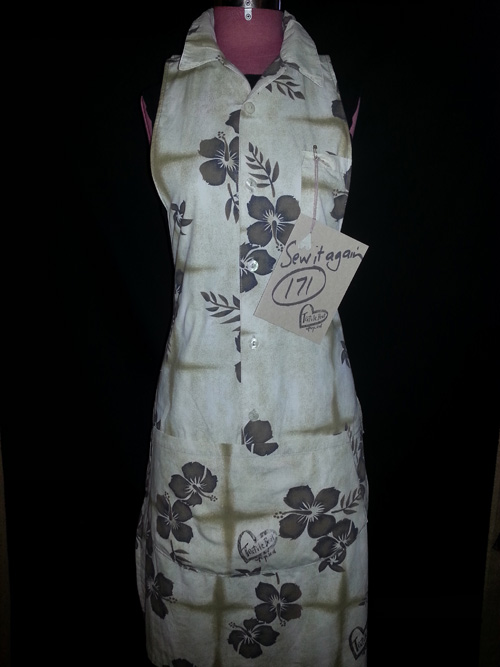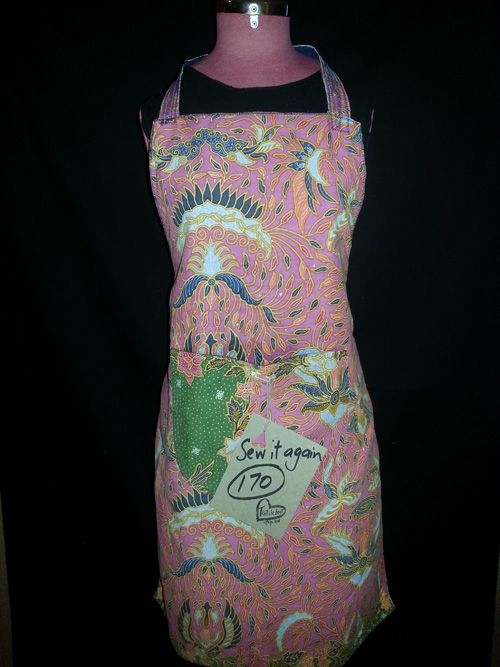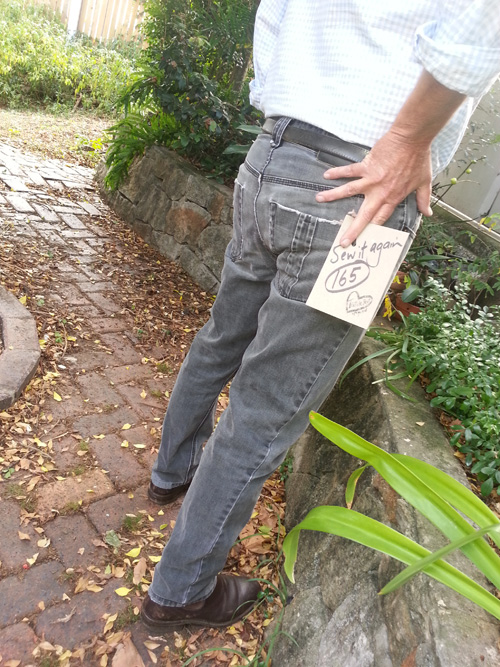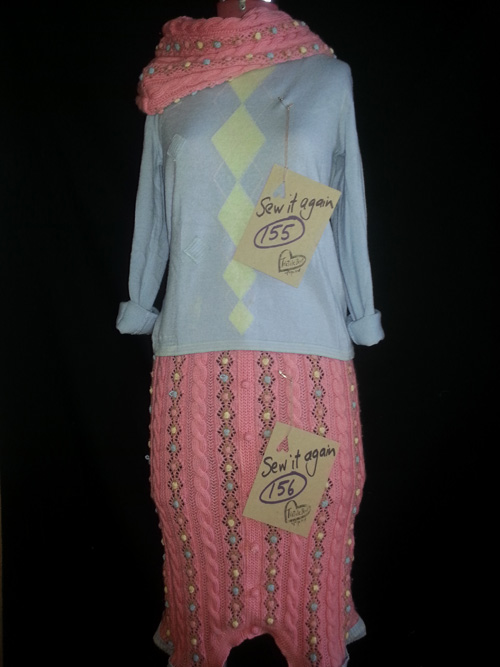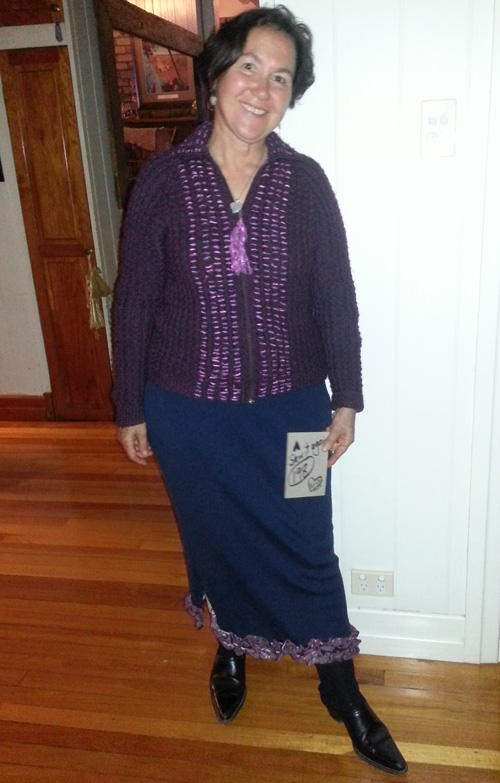 The benefits of upcycling are you can wear clothes that suit your body shape, are comfortable, in colours/fabrics of choice … and reduce your environmental footprint as you dress with conscience.
The benefits of upcycling are you can wear clothes that suit your body shape, are comfortable, in colours/fabrics of choice … and reduce your environmental footprint as you dress with conscience.
Apart from underwear, it is many years since I bought a ‘new’ garment. I’m upcycling and refashioning every day this year as a way of auditing the many wardrobes of pre-loved clothing I’ve rescued from opshops, family and friends. I do this because there is pleasure, reward and satisfaction in rescuing natural-fibre garments that are under-valued and worthy of refashion – and to demonstrate an alternative to fast-fashion churn and buying new.
Sew 198 was an assortment of op-shop garments that I’ve massaged to suit myself. The long navy knitted wool-blend skirt had two white stripes at the bottom. Continue reading
